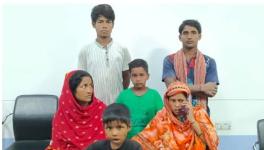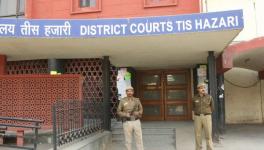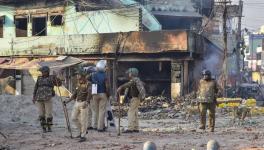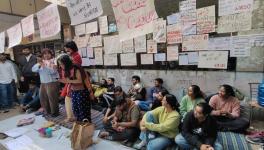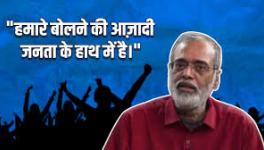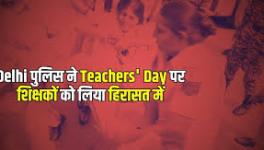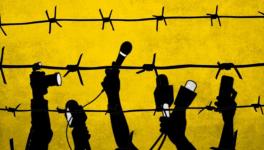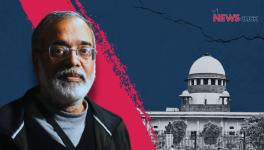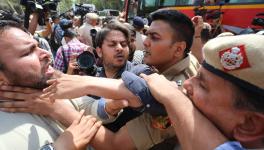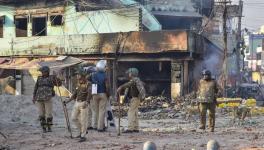From Asking About Sikhs Children Now Ask, Why Do We Kill Muslims?
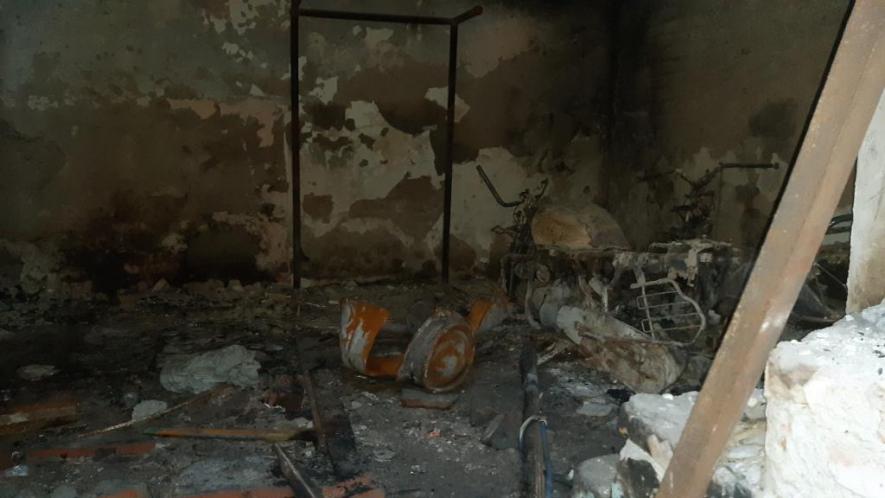
File Photo
It was a cold February morning and, as always, I dropped my sons to the school bus stop, picked up some vegetables and got started for the day. As I sipped tea, I read the blaring headlines about the aftermath of the recent riots in Delhi, which were disturbing. The picture of a young boy mourning the death of his uncle, a victim of the riots, must have shaken many beyond words.
My sixteen-year-old had an exam, and at forenoon it was usual for him to call to share his exam experience. But that day was different. He called to ask if he could bring along a friend to stay at home for a few days. The boy lived in north-east Delhi which had been hit by riots, and because of the curfew, he was unable to commute between home and school. He had earlier stayed at another friend’s home for a day. His parents were hesitant to ask other families for help, so the young boy himself confided in my son.
Delhi had witnessed protests against the Citizenship Amendment Act (CAA) since December 2019. Some peaceful demonstrations in the city were followed by police lathi-charge, arrests and unexpected violence.
At a short distance from my home, a sea of protestors had assembled at a makeshift protest site, holding peaceful protests round the clock. These protestors practised different faiths, but together they put up a strong fight for their rights .Young mothers cradling their new-born, old women and men, children, activists, lawyers, entrepreneurs, home-makers, journalists, labourers, academicians, all braved the winter chill for a common cause. Such a strong solidarity among Delhiites was last seen in the protests after the brutal gang rape of a young woman in Delhi in 2012.
The city’s air was tense since months, and security was beefed up in most gated colonies. Yet, some pockets of Delhi remained vulnerable. The clashes between pro and anti-CAA protestors took an ugly turn when riots erupted in north-east Delhi on February 23. Innocent lives were lost, hundreds were left injured, and thousands rendered homeless in this violence.
The young boy, whom I will call “D”, made himself comfortable at home, content with the borrowed clothes and books he had to use during his stay. His mother, whom I never knew before, called to explain the situation in her neighbourhood. The family now felt safe at home, but venturing out was a risk they would rather avoid, even after the curfew was relaxed.
Expressing profound gratitude, she spoke about these difficult times, and her concern for her son. In our short conversation we forgot to exchange names, but we bonded as mothers, and I could give her some comfort and assurance.
Over video calls, D would speak with his family, keeping them updated of the situation around, and dismissing rumours that were spread about fresh violence in the city. My children whole-heartedly took the responsibility of keeping him in good spirits with their light banter. The house-helps did their bit to make sure he ate well and felt welcome.
None of us discussed the riots in his presence, but the children knew that their city was not the same any more. For my ten-year-old, the word “mob” was now more than a collective noun he had learnt in school.
After the last exam, another classmate living nearby also stayed over at our place. Busy with their gaming consoles while lapping up pizzas, one could see that these children, all of different faiths, bonded over common interests, leaving differences aside. Having grown up in a cosmopolitan environment, they had deep respect for each other's religious beliefs and food habits, something that many adults have yet to learn.
After a few days, when the situation in Delhi improved, D left for his home. There was a lump in my throat as he thanked us and bid goodbye, hoping to meet again in better times.
This is not the first time that I have witnessed the city being savaged by rioters. I was in school on 31 October 1984 when late Prime Minister Indira Gandhi was assassinated by her two Sikh bodyguards. Immediately after her death, mobs targeting the Sikh community took to the streets. My school building faced Delhi’s prominent Gurudwara Bangla Sahib. Amidst the blaring police sirens, we could hear shrill screams from the Gurdwaras loudspeakers.
Terrified and confused, we girls followed our teachers through a narrow pathway behind the Sacred Heart Cathedral, to assemble in the playground of the adjacent boys’ school. This ensured siblings were together, and the collective efforts of two schools helped each child reach home safe. It was a situation we had never experienced before, and I am sure that most have yet to overcome. (The date is etched in my memory even as I celebrate my first born’s birthday on this day...) Ripples of the riot were felt across different sections of the society. Congress party’s present general secretary, Priyanka Gandhi, was a student here, and had to leave regular school due to security concerns after the assassination of her grandmother.
Over the next few days we read and watched the news about the brutal killing and looting of Sikhs across Delhi and other parts of the country. Through phone calls, my friends in different parts of the city shared their fears, griefs and dissent. Even as a nine-year-old, I wondered why a whole community had to pay the price of a crime committed by two people. The pieces didn’t quite fit together.
Thirty five years since, I have come full circle as my children ask the same questions—why are the innocent being targeted by mobs because of their religion? Why can the police not stop such atrocities?
The issue is that while Delhi may have developed over these decades in terms of infrastructure and world-class facilities, the city residents have a lot of catching up to do. Delhiites often look the other way when there is blatant injustice and crime happening around them. While lives and properties are torched, those unaffected by it remain silent spectators. The Que Sera Sera approach of the city dwellers has been exploited by those with vested interests.
The repeated inaction by the police has only fuelled such mob attacks. It is unfortunate that the city may remain vulnerable to riots if we do not express our dissent and question the government’s inability to stop such bloodbaths. It is our responsibility to make the city safe for our children, and pollution is not the only toxin that calls for attention.
The wounds of the Sikh massacre are still raw, as many of the accused were not booked for their crimes. That we silently watched the city burn again speaks volumes about our indifference to critical issues.
It should get us really worried that the country’s capital became a soft target for rioters on a day when security was at its pinnacle for United States President Donald Trump’s visit. The least we can do for the future generation is to question the security lapses, the investigation, and the government’s silence. If we fail to keep the city’s social fabric intact, we may let down our children badly.
The author is an independent writer. The views are personal.
Get the latest reports & analysis with people's perspective on Protests, movements & deep analytical videos, discussions of the current affairs in your Telegram app. Subscribe to NewsClick's Telegram channel & get Real-Time updates on stories, as they get published on our website.









